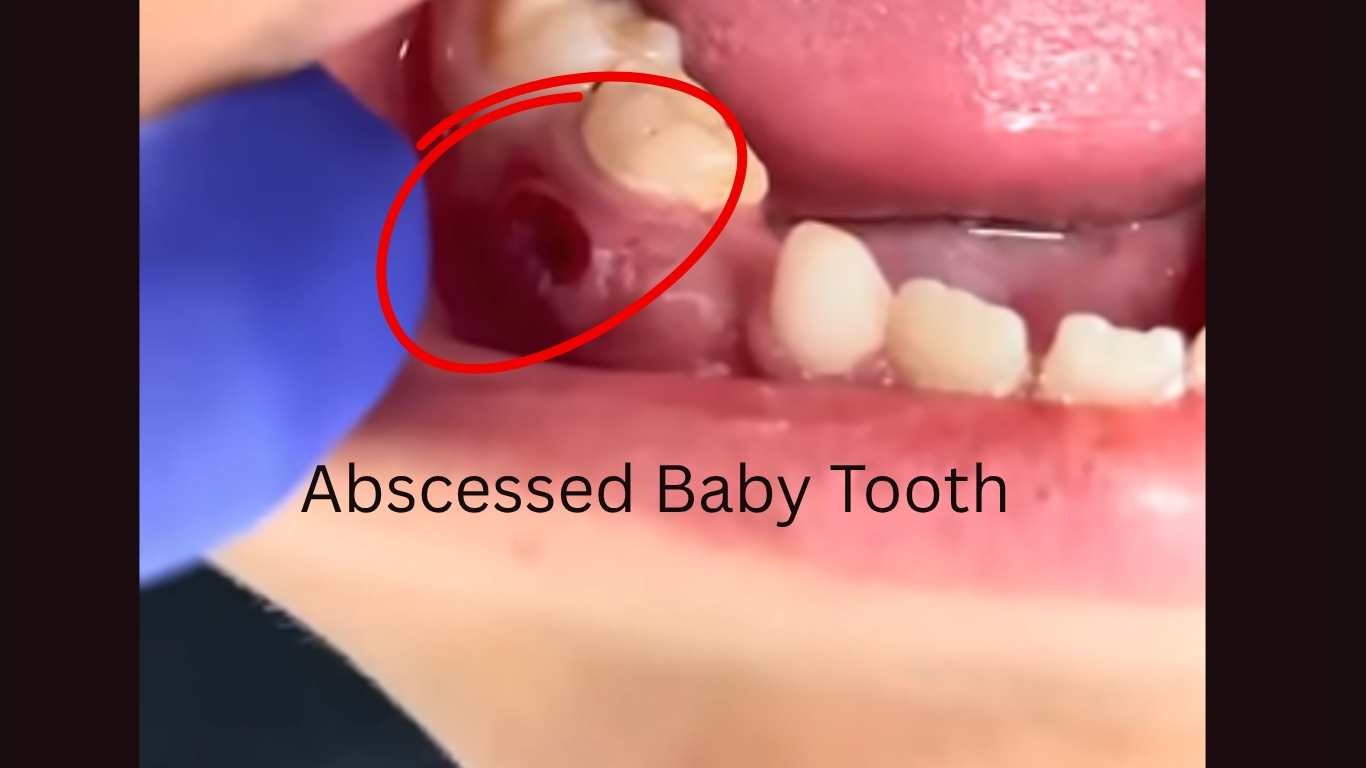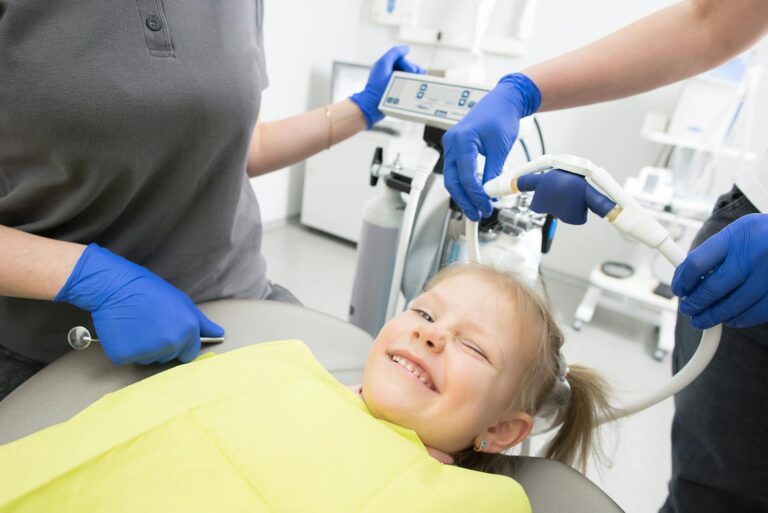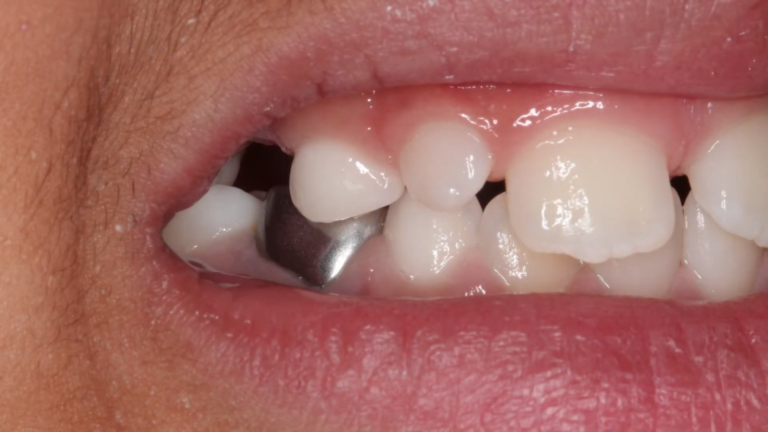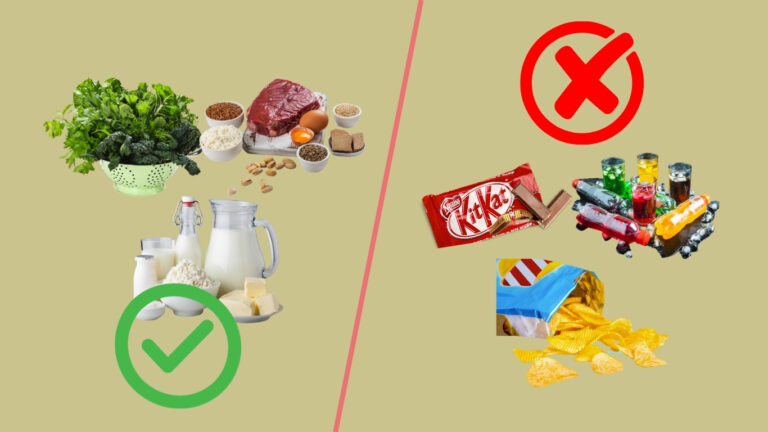Child Has Abscessed Baby Tooth – What Are the Risks?
Hearing that your child has an abscessed baby tooth can be alarming. After all, baby teeth are temporary—so how serious could an infection be, right?
The truth is, even though baby teeth eventually fall out, they play a vital role in your child’s health and development. When one becomes abscessed—meaning an infection has developed at the root or in the surrounding gum tissue—it’s not something to ignore. Prompt treatment is essential to protect your child’s comfort, oral health, and overall well-being.
In this blog, we’ll break down what a dental abscess is, what signs to look for, and why it’s important to act quickly.
What is an abscessed baby tooth?
A dental abscess occurs when bacteria infect the inside of the tooth (pulp) or the tissue around the root. In baby teeth, this typically results from untreated tooth decay, trauma to the tooth, or gum disease. The body responds to the infection by creating a pocket of pus, which may cause swelling, pain, or even visible bumps on the gums.
An abscess is not just a toothache—it’s an infection that can spread and cause more serious problems if left untreated.
Common Signs of an Abscess in a Child’s Tooth
Recognizing the early signs of a dental abscess in your child can make a significant difference in preventing complications and ensuring quick, effective treatment. While some symptoms may be subtle at first, others can escalate quickly—especially in younger children who may not be able to express exactly what they’re feeling. Here’s a closer look at the symptoms you should keep an eye on:
1. Persistent or throbbing tooth pain
This is often the most noticeable and distressing sign. Your child might complain of a dull, aching pain that doesn’t go away or gets worse when they bite down, eat, or drink—especially hot or cold foods. The pain may come in waves or feel like a pulsing sensation. In very young children, signs of pain might include irritability, crying during meals, or reluctance to eat.
2. Swelling in the face, cheek, or jaw
Swelling is a clear indicator that an infection is present. You might notice one side of your child’s face appears puffier than usual, or their cheek feels warm and tender to the touch. This swelling can develop quickly and, in some cases, may extend down toward the neck or up around the eye area—requiring urgent attention.
3. Red, swollen gums or a small pimple-like bump on the gum
Often called a “gum boil” or fistula, this bump may appear near the infected tooth. It might look like a small white, yellow, or red pimple on the gums and may occasionally ooze pus. This is a classic sign of an abscess, indicating that the infection is trying to drain. The surrounding gum tissue may appear bright red, inflamed, and sore to the touch.
4. Fever or general malaise (feeling unwell)
Because a dental abscess is an infection, your child’s body may respond with a mild to moderate fever. They might also feel unusually tired, fussy, or “off,” even if they’re not clearly pointing to pain. Some children may complain of a headache or general discomfort, and these systemic symptoms should never be overlooked.
5. Bad breath or a foul taste in the mouth
If the abscess is draining pus or infected fluid, your child might complain of a strange or unpleasant taste in their mouth. You may also notice their breath has a strong, foul odor—despite brushing or rinsing. This is a common sign that bacteria and infection are present.
6. Difficulty eating, chewing, or sleeping
Children with an abscessed tooth often struggle to eat normally because of sensitivity or pain when biting or chewing. They may favor one side of the mouth, avoid certain textures, or stop eating altogether. Sleep may also be disrupted, especially at night when lying down can increase pressure in the inflamed area, intensifying the pain.
Sometimes, especially in young children, the pain may come and go—or your child may not be able to describe exactly what’s wrong. If you notice swelling or a pimple on the gums near a tooth, it’s best to have it examined right away.
Why you shouldn’t ignore an abscessed baby tooth
Even though baby teeth are temporary, an abscessed tooth can pose serious health risks if not addressed promptly:
1. The infection can spread
Bacteria from a dental abscess can travel to other parts of the mouth, face, or even into the bloodstream. In rare but serious cases, it can lead to systemic infections such as cellulitis or, in extreme situations, sepsis. This is especially concerning in children, whose immune systems are still developing.
2. Damage to developing permanent teeth
The roots of baby teeth are located close to the developing adult teeth beneath them. A severe infection in a baby tooth can interfere with the proper formation or eruption of the permanent tooth, potentially causing discoloration, enamel defects, or misalignment.
3. Chronic pain and missed school or sleep
An untreated abscess can cause ongoing pain, making it difficult for a child to eat, concentrate, or get proper rest. This discomfort can interfere with school attendance, nutrition, and emotional well-being.
4. Premature loss of the tooth
If the abscessed tooth needs to be extracted before it’s naturally ready to fall out, it may create space issues in the mouth. This can lead to crowding or misalignment of future teeth, often requiring orthodontic treatment later on.
How Is an Abscessed Baby Tooth Treated?
Treating an abscessed baby tooth requires more than just relieving your child’s discomfort—it’s about eliminating the infection, protecting surrounding teeth and tissues, and preserving the space needed for healthy permanent tooth development. The right treatment depends on how advanced the infection is, how much of the tooth structure is affected, and your child’s age and comfort level.
Here’s a closer look at the most common treatment options:
1. Antibiotics – Managing the infection safely
If your child shows signs of swelling in the face, a visible gum abscess, or develops a fever, your dentist will likely prescribe a course of antibiotics. These medications help to control the spread of bacteria and reduce inflammation. However, it’s important to note that antibiotics alone will not cure the abscess—they’re used as part of a larger treatment plan to stabilize the infection before addressing the source. Always complete the full course, even if your child starts feeling better midway through.
2. Pulpotomy or Pulpectomy – Saving the tooth with a baby root canal
If the abscess is caused by deep decay that has reached the pulp (the inner tissue of the tooth), but the surrounding tooth structure is still strong, your dentist may recommend a procedure called a pulpotomy or pulpectomy.
- A pulpotomy involves removing only the infected portion of the pulp inside the crown of the tooth, while leaving the root canals intact. The area is then filled with a medicated material and covered with a protective crown—usually a stainless steel crown to restore full function.
- A pulpectomy is more extensive. In this case, all pulp tissue—including from the root canals—is removed, and the inside of the tooth is disinfected and sealed. This is typically done if the infection has reached deeper into the tooth’s roots but the tooth can still be saved.
Both procedures are common and safe for young children and are often referred to as “baby root canals.” Their goal is to preserve the baby tooth until it’s naturally ready to fall out, which helps maintain proper spacing for the adult teeth to come in later.
3. Tooth Extraction – When the tooth can’t be saved
If the baby tooth is too severely damaged or the infection is too advanced, the best course of action may be to remove (extract) the tooth entirely. This is especially true if the infection is putting the nearby permanent tooth at risk or if there’s little chance of restoring the tooth safely.
After the extraction, your dentist may recommend placing a space maintainer—a small, custom-made device that holds the empty space open until the adult tooth is ready to erupt. This helps prevent nearby teeth from shifting into the gap, which could lead to crowding or misalignment that requires orthodontic treatment later.
Your dentist’s role: personalized, gentle care
A pediatric dentist will always take a thoughtful and conservative approach, choosing the treatment that is both effective and least stressful for your child. They will evaluate the X-rays, examine the tooth, consider your child’s age and dental development, and explain all your options in clear, supportive terms.
They may also take steps to ensure your child feels comfortable during the procedure—such as using local anesthesia, nitrous oxide (laughing gas), or other child-friendly sedation options when necessary.
What Parents Can Do
– Don’t delay care. If you suspect an abscess, call your dentist right away. Early treatment can prevent complications.
– Help your child maintain oral hygiene. Regular brushing and flossing reduce the risk of cavities and infections.
– Schedule routine dental visits. Seeing the dentist every six months helps catch issues early—before they become painful problems.
Final Thoughts
An abscessed baby tooth is more than just a bump or ache—it’s a sign that your child’s mouth needs attention and care. With prompt diagnosis and the right treatment, your child can recover quickly, comfortably, and continue smiling with confidence.
Baby teeth may be temporary, but their impact on your child’s health is lasting. Don’t underestimate their importance.






